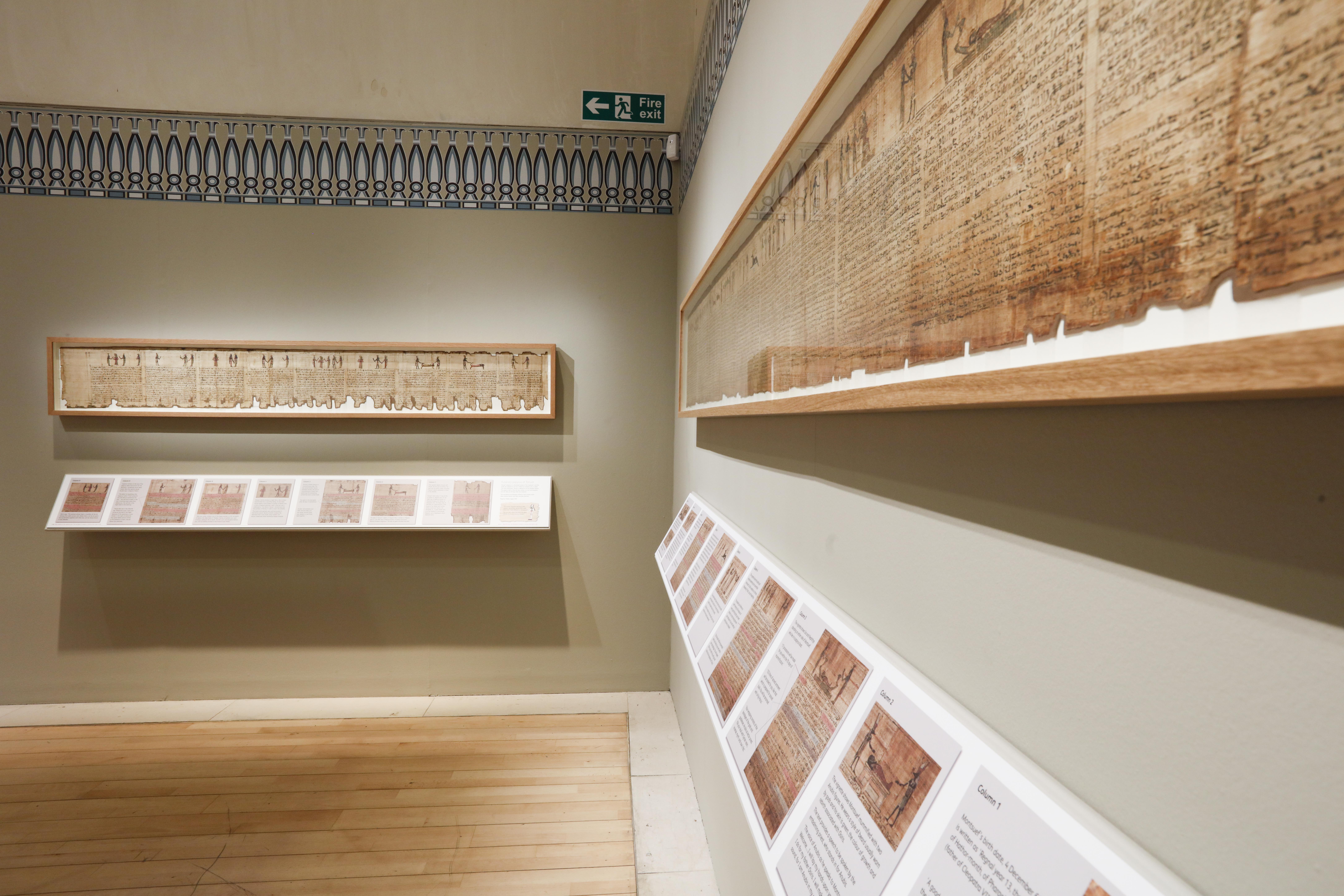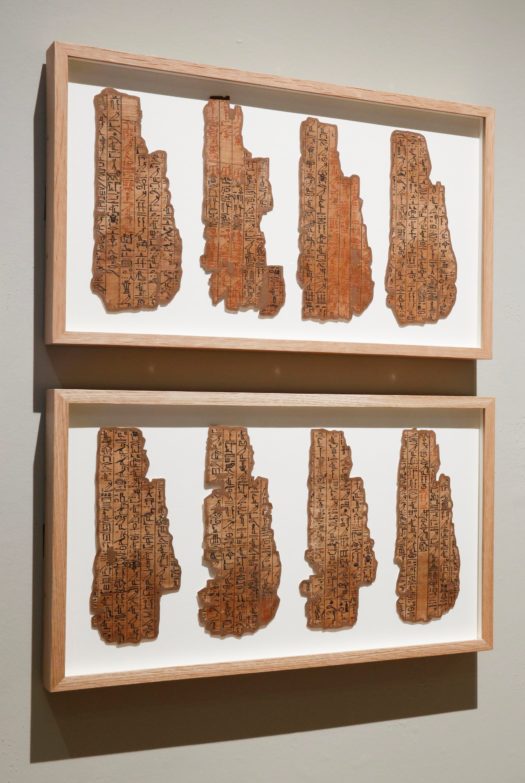The Challenge
- 9-foot long papyri makes use of glass prohibitively heavy.
- Papyri require anti-static glazing, so fibers don’t detach from surface and stick to glazing.
- Multiple cleaning of regular acrylic is susceptible to abrasions.
The Solution
Optium Museum Acrylic®
Anti-static protection exceeds that of glass
Immediately eliminates static charge. Makes for safer, easier framing and less cleaning.
Shatter resistant
Safeguards against injury and damage to papyri and visitors. This product is ideal for valuable works, high traffic areas, and public event spaces.
Lightweight
Acrylic is half the weight of glass; Ideal for large, heavy projects.
Abrasion resistant
A durable hard coat protects against scratches from cleaning and general exposure to the public.
Anti-reflective
Offers an optimal viewing experience, allowing viewers to see the papyri without distracting reflections.
99% UV blocking
Protects the painting from the most damaging light wavelengths, helping prevent fading and degradation.
The Work
In preparation for the exhibition The Tomb: Ancient Egyptian Burial, the National Museum of Scotland conserved and re-framed three significant papyri. Two date from 9BC, as per their inscription, and fragments of one dates to about 1300 BC. Their extremely fragile nature and the size of one, which measures 9 feet in length, made for very challenging conservation and framing.
More Info
- Read our QuickVue article on this project.
- Read here for more information on this past exhibit.
- Check out other papyri displayed under Optium Museum Acrylic here.

